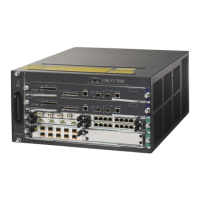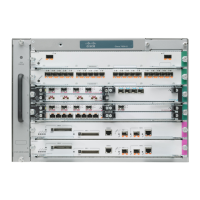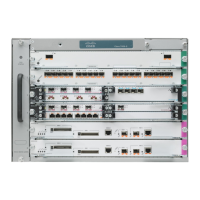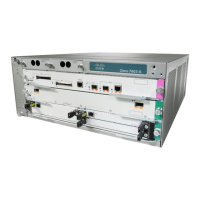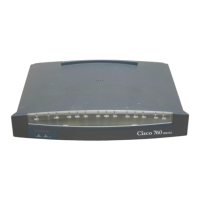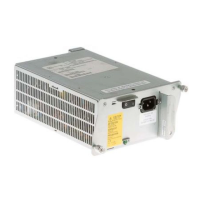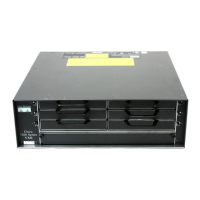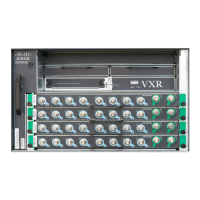17-2
Cisco 7600 Series Router Cisco IOS Software Configuration Guide—12.1E
78-14064-04
Chapter 17 Configuring IP Unicast Layer 3 Switching on Supervisor Engine 2
Understanding How Layer 3 Switching Works
Understanding Hardware Layer 3 Switching on PFC2 and DFCs
Hardware Layer 3 switching allows the PFC2 and DFCs, instead of the MSFC2, to forward IP unicast
traffic between subnets. Hardware Layer 3 switching provides wire-speed forwarding on the PFC2 and
DFCs, instead of in software on the MSFC2. Hardware Layer 3 switching requires minimal support from
the MSFC2. The MSFC2 routes any traffic that cannot be hardware Layer 3 switched.
Hardware Layer 3 switching supports the routing protocols configured on the MSFC2. Hardware
Layer 3 switching does not replace the routing protocols configured on the MSFC2.
Hardware Layer 3 switching, which runs equally on the PFC2 and DFCs to provide IP unicast Layer 3
switching locally on each module, consists of the following functions:
• Hardware access control list (ACL) switching—For policy-based routing (PBR)
• Hardware NetFlow switching—For TCP intercept, reflexive ACL forwarding decisions, Web Cache
Communication Protocol (WCCP), and server load balancing (SLB)
• Hardware Cisco Express Forwarding (CEF) switching—For all other IP unicast traffic
Hardware Layer 3 switching on the PFC2 supports modules that do not have a DFC. The MSFC2
forwards traffic that cannot be Layer 3 switched.
Traffic is hardware Layer 3 switched after being processed by access lists and quality of service (QoS).
Hardware Layer 3 switching makes a forwarding decision locally on the ingress-port module for each
packet and sends the rewrite information for each packet to the egress port, where the rewrite occurs
when the packet is transmitted from the Cisco 7600 series router.
Hardware Layer 3 switching generates flow statistics for Layer 3-switched traffic
. Hardware Layer 3
flow statistics can be used for NetFlow Data Export (NDE). (See Chapter 33, “Configuring NDE”.)
Understanding Layer 3-Switched Packet Rewrite
When a packet is Layer 3 switched from a source in one subnet to a destination in another subnet, the
Cisco 7600 series router performs a packet rewrite at the egress port based on information learned from
the MSFC2 so that the packets appear to have been routed by the MSFC2.
Packet rewrite alters five fields:
• Layer 2 (MAC) destination address
• Layer 2 (MAC) source address
• Layer 3 IP Time to Live (TTL)
• Layer 3 checksum
• Layer 2 (MAC) checksum (also called the frame checksum or FCS)
Note Packets are rewritten with the encapsulation appropriate for the next-hop subnet.
If Source A and Destination B are in different subnets and Source A sends a packet to the MSFC2 to be
routed to Destination B, the router recognizes that the packet was sent to the Layer 2 (MAC) address of
the MSFC2.
To perform Layer 3 switching, the router rewrites the Layer 2 frame header, changing the Layer 2
destination address to the Layer 2 address of Destination B and the Layer 2 source address to the Layer 2
address of the MSFC2. The Layer 3 addresses remain the same.
In IP unicast and IP multicast traffic, the router decrements the Layer 3 TTL value by 1 and recomputes
the Layer 3 packet checksum. The router recomputes the Layer 2 frame checksum and forwards (or, for
multicast packets, replicates as necessary) the rewritten packet to Destination B’s subnet.

